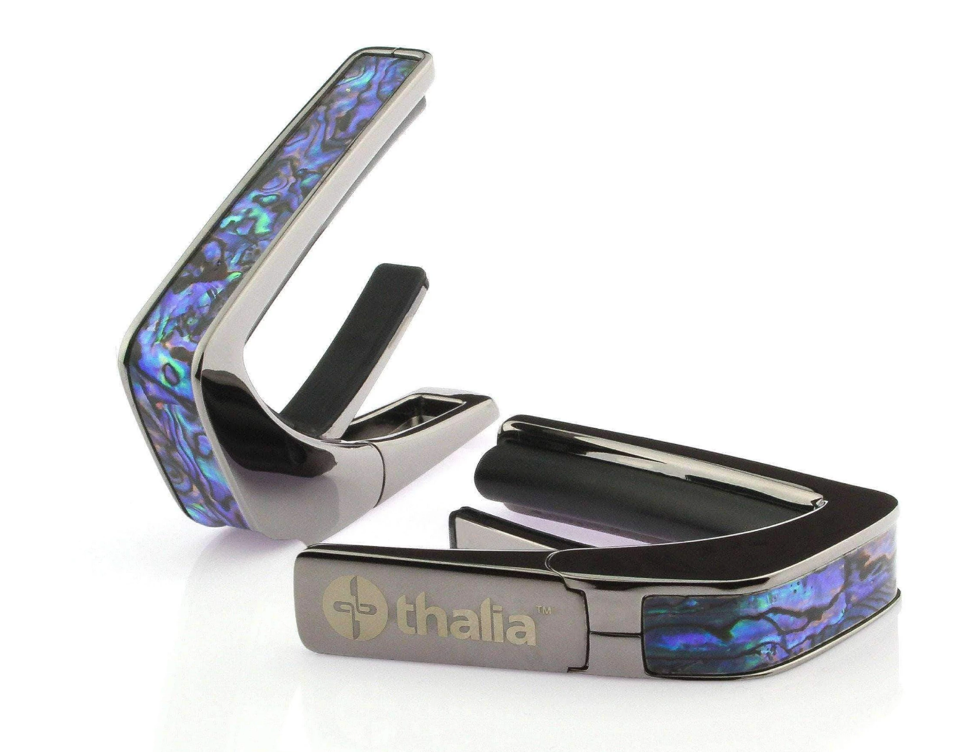“Be intentional about where you’re picking. Moving from the bridge to the fingerboard is as dramatic as switching pickup positions on an electric”: 21 ways to get more from your acoustic guitar
Acoustic guitars are arguably simpler than electrics, but there’s still a wealth of details involved in playing like a pro…

One of the great pleasures of acoustic guitar is the direct connection you have with your instrument. There is little to come between the musical idea in your head and what you hear coming out of the soundhole.
But that’s not to say there aren’t all kinds of ways we can find new tones and different approaches that can improve our playing, or even just to switch things up in order to find fresh inspiration.
Here, we look at 21 ways you can get more from your acoustic, from the technical – ie, how you play the instrument – to the gear-focused.
1. Know your body types
If you’re shopping for a beginner acoustic guitar, realise that the different shapes and sizes of body are not only about what’s most comfortable, but also what style of music they most suit.
Dreadnoughts are the go-to for big strumming and bluegrass picking, while smaller bodies are often better for bringing out delicate fingerstyle parts.
That said, if you love a particular guitar, don’t be put off if it isn’t the standard choice for your genre. Just be aware of the different sounds each shape can produce.
2. Change your pick gauge

Changing your acoustic guitar pick is the most direct way to change your tone. The thickness and the shape of the tip both impact the sound.
All the latest guitar news, interviews, lessons, reviews, deals and more, direct to your inbox!
Generally, thinner picks have more attack and less of the fundamental note, although very thick picks produce more upper harmonic ‘chirp’ as they contact the string. If you want a new tone, buy a variety pack of picks and try them out side by side.
3. Experiment with pick material
Delrin (as used in Dunlop 500) is smooth and warm. Celluloid (used by Fender and many other brands) is bright with a lot of click in the attack. Nylon has a gentle tone with probably the least pick click. Ultex, meanwhile, has both brightness and warmth for a very balanced sound.
Which is right for you will depend on the song, the way you pick and your guitar’s natural tone.
4. Try different strings

The most common strings are 80/20 bronze (brighter) and phosphor bronze (warmer). Many acoustic guitarists believe it’s worth using heavy strings to get the wood to vibrate, but lighter strings allow a higher proportion of harmonic overtones relative to the fundamental with less low-end.
Another theory is that larger body styles benefit more from bigger strings. It’s always worth experimenting to find what you like.
5. Use various pick grips

Changing the way you hold your pick will not only change the feel, but also the angle your pick approaches the strings at, and therefore the tone. If you want more attack and harmonics, angling the pick at 45 degrees to the string could help, while having the pick parallel to the strings gives a bolder, rounder tone.
Holding the pick on the side or the pad of your index finger, with thumb and middle (a la noted acoustic player Eddie Van Halen!) or with all three will give different feels and sounds.
6. Vary your picking motion
Guitar teachers sometimes insist that picking motions must come from the wrist, but if you watch the pros carefully, you’ll see it’s more complex than that. Strumming can come from the wrist or rotating forearm.
Even the elbow, which some teachers say should never be used, can work effectively as long as you’re not holding unnecessary tension. It’s rare to see an acoustic strummer with a completely still elbow. Try different things until you get comfortable.
7. Don’t dig too deep!
Your strumming should sound effortless, even when it’s loud and intense. If it feels like you’re having to fight to get over each string, the tone and timing will suffer. The most likely cause is burying the pick too far below the strings. Think of the pick as brushing over the top of the strings rather than colliding with each one.
8. Buy a bridge pin puller
If you’ve ever yanked at a bridge pin for minutes, only to have it explode out of the guitar and vanish under a sofa, you probably won’t need much persuasion here.
Pulling bridge pins without losing or damaging them is an annoying job, and a dedicated pin puller can save you frustration every time. Most string winders have a small indent to make the job a little easier, but dedicated tools like those by Martin, Music Nomad, or Allparts can make it a breeze.
9. Get your string height right
String height is always a compromise. Lower is almost always easier to play, but will buzz if it gets too low, while higher often sounds better.
Because most acoustics don’t have adjustable saddles, lowering the action yourself is not a great idea for the inexperienced. Raising it is less problematic though.
Remove the white saddle from the bridge (it should lift out without a fight), drop in a thin strip of card or hardwood maple, then place the saddle back in. It’s easily reversible if you don’t like it.
10. Buy a good capo

If you think guitar capos are just for people who can’t play barre chords, you’re missing out. A capo will allow you to play things that are physically impossible even for Tommy Emmanuel. A good-quality one will also give a tone similar to that of open strings, so you can get the great tone of open chords regardless of what key you’re playing in.
11. Change where you strum

Changing where you strum on the strings makes a big difference to acoustic tone. It’s easy just to let your picking hand land wherever feels natural and never examine it.
Try instead to be intentional about where you’re picking. Moving from the bridge to the fingerboard is as dramatic as switching pickup positions on an electric. Try accenting a change with a purposeful raked downstroke beside the bridge.
12. Try fingerstyle

Fingerstyle playing on acoustic guitar is older than flatpicking, so, if you’re only ever using a plectrum, you’re missing out on your guitar’s potential.
You can use flesh or fingernails, although steel strings can be tough on nails, so many advanced fingerpickers use false nails.
Use your thumb to pluck the low E, A, and D strings. You may want to use just one finger at first, and you can achieve a lot of beautiful parts without getting more complicated than that.
13. Try a thumbpick

If you like fingerstyle parts but miss the attack of a plectrum, a thumbpick is a great tool. Because you no longer need to grip the pick, your index finger gets freed up for plucking. Travis picking works especially well with a thumbpick. Check out Chet Atkins to see its potential.
14. Check out hybrid picking – the best of both worlds
Hybrid picking is the art of combining regular flatpicking with fingerstyle, by using your middle, ring, and occasionally pinky fingers to pluck notes the plectrum can’t reach.
You’ll probably have to slightly change your pick angle to get the other fingers comfortably in position, but switching between this and regular picking technique will be a breeze. Tommy Emmanuel, Mike Dawes and Richard Thompson have all used this approach.
15. Get a quality DI box

When plugging in your piezo-equipped acoustic, the difference a good DI (direct injection, meaning plugging straight into a PA or mixer) box can make is enormous. The LR Baggs Para Acoustic DI also includes a preamp and EQ, and is a classic.
The Fishman Platinum Para DI has bags of flexibility, although it’s not cheap. Caline, Behringer, and Harley Benton, meanwhile, have budget-friendly options that will make you sound better without causing unpleasant alerts from your mobile banking app.
16. Fit a second strap button
Many acoustics only come with one strap button at the base of the body, leaving you tie the strap to the headstock if you want to stand up.
Many players find that quite ungainly, and if you’re one of them, adding a strap button where the neck joins the body will improve things no end. If you’re confident drilling a small pilot hole it’s a quick DIY job, but look at some other guitars first for the best position.
17. Slide

Setting up an electric guitar with the high action and heavy strings needed for slide is an off-putting barrier of entry. Happily, most acoustic guitars already have a setup that will work for slide.
Glass and brass slides have a mellow tone that sounds great on acoustic, the ideal place for your first slide excursions. And if your acoustic’s action is on the low side, simply opt for a lightweight slide such as Taylor’s Ebony Slide or the MagSlide MS-2, which are sure to put less downward pressure on those strings.
18. Destroy feedback

If you’re playing live, you’ll find that acoustic guitars just love to break into uncontrollable feedback. Covering the soundhole is a cheap and easy solution.
For the cheapest fix, you can just use duct tape, but if you’d rather preserve your instrument’s finish and have a reusable option, feedback busters can be bought from under $10.
19. Relax your fingers

Chances are, when you first tried playing chords on a steel string acoustic, you had to push with all your might just to get a clear note without buzz. Many players never get out of this habit, and you could be wearing yourself (and your frets!) out unnecessarily by over-squeezing.
Try fingering a chord and applying as little pressure as possible with each finger while still getting a clear tone. If you notice this feels more relaxed, practise this regularly until you form a new habit. This goes double for barre chords!
20. Try getting your thumb over the neck
The wide fingerboard on classical guitars makes thumb-over hand positions impractical, but you can happily fret notes on the low E string with your thumb on most other guitars.
Try adding your thumb to the 2nd fret while playing an open D major chord for a big D/F#, or fretting the lowest note in E shape barre chords with your thumb like Hendrix. It’s a great alternative if you get fatigued playing barre chords.
21. Experiment with impulse responses
If you use a piezo pickup, you’ve doubtless struggled to get a natural plugged-in tone. Impulse responses (IRs) have changed the game for speaker cabinet simulation and they’re doing a similar thing for amplified acoustic guitar.
You can add them to your recorded tone with a plugin, or the Fishman Aura Spectrum, NUX Optima Air, and LR Baggs Voiceprint DI are all dedicated pedals for the purpose.
Jenna writes for Total Guitar and Guitar World, and is the former classic rock columnist for Guitar Techniques. She studied with Guthrie Govan at BIMM, and has taught guitar for 15 years. She's toured in 10 countries and played on a Top 10 album (in Sweden).






